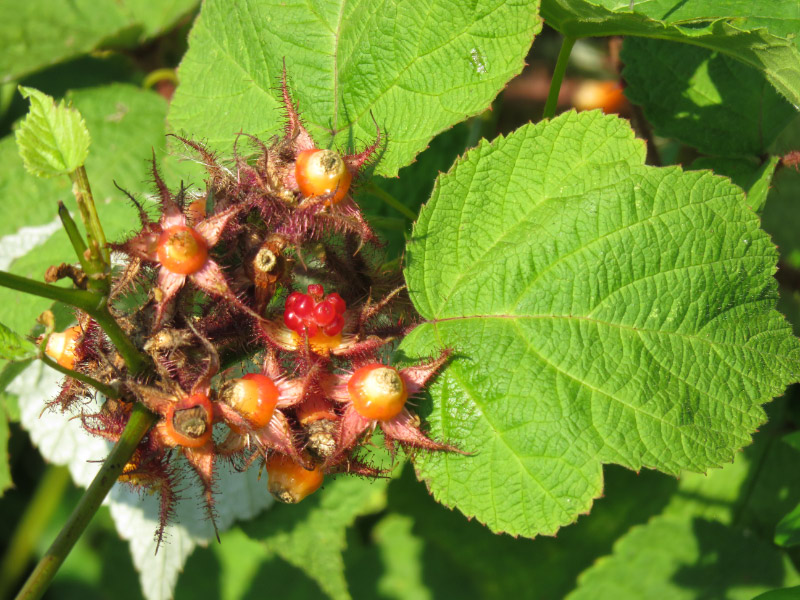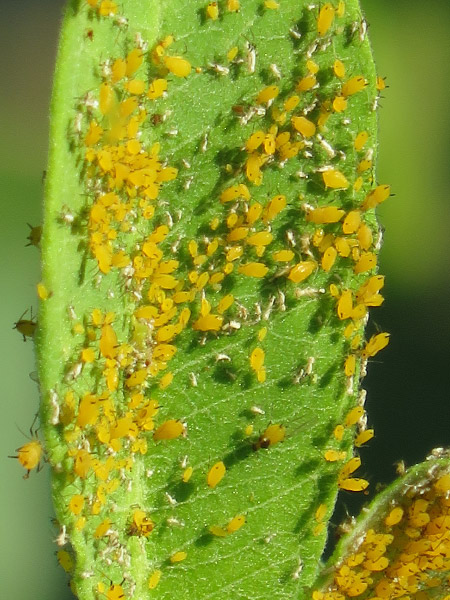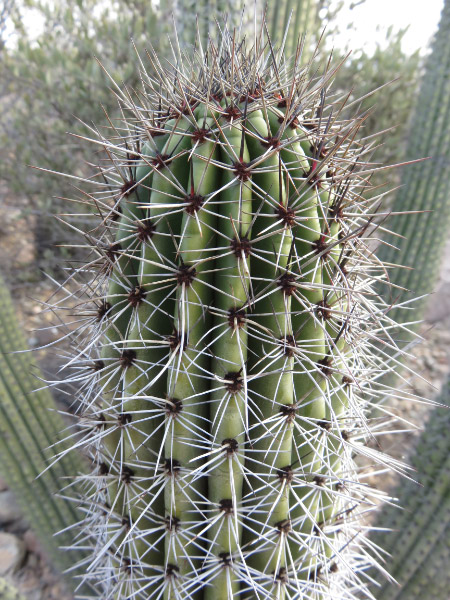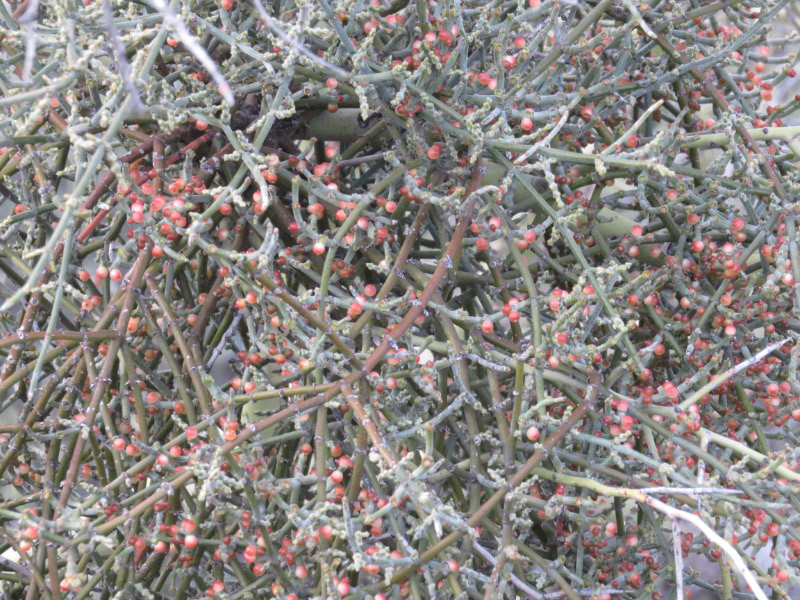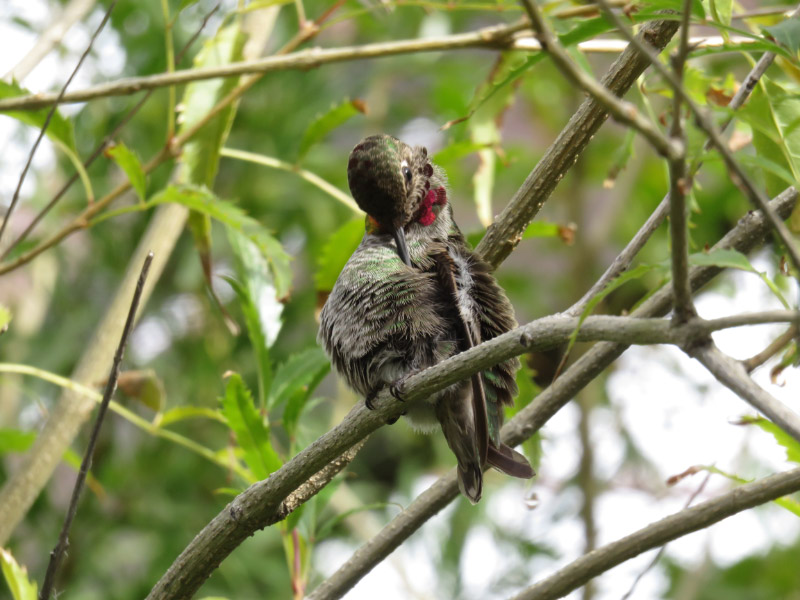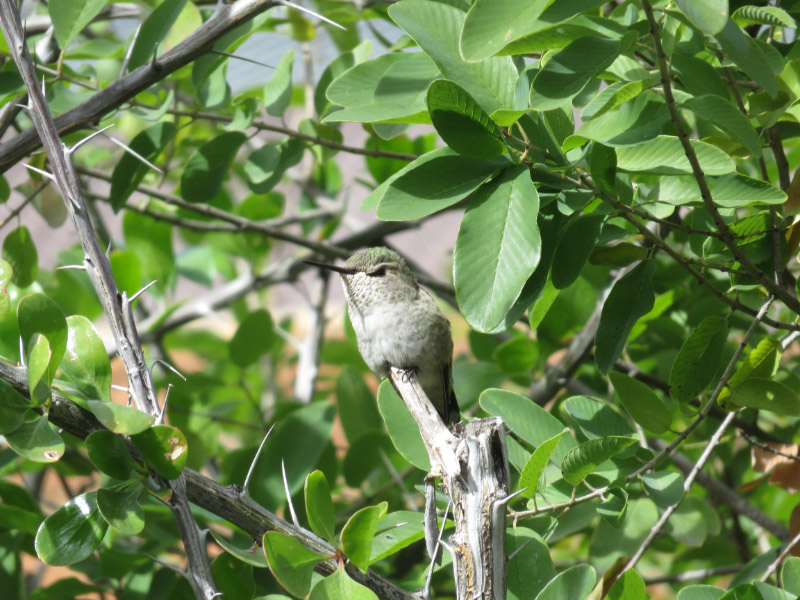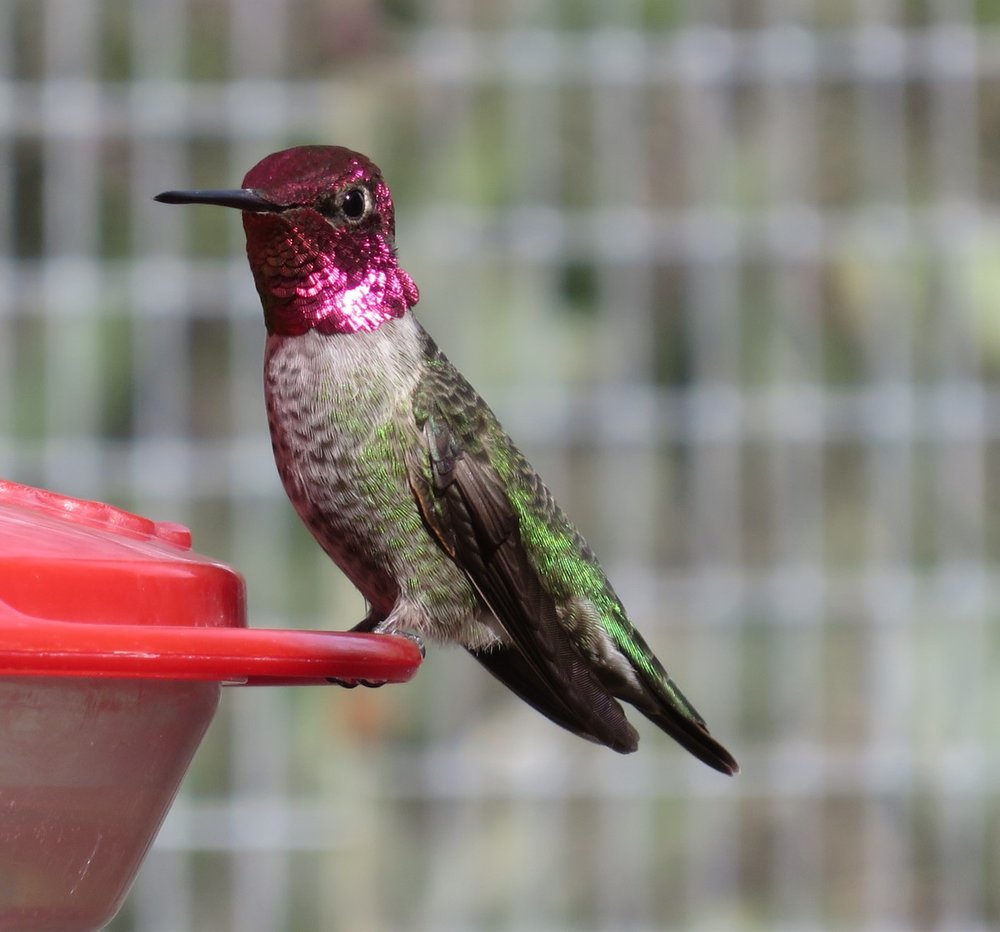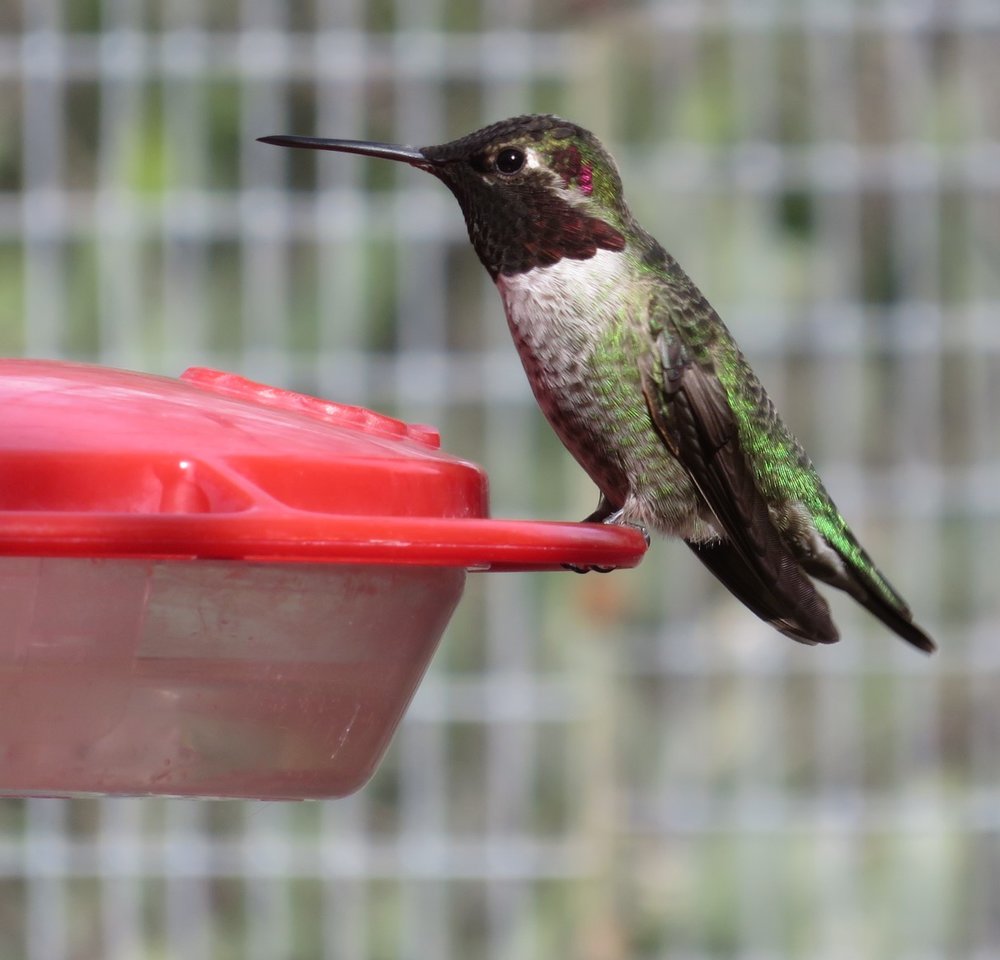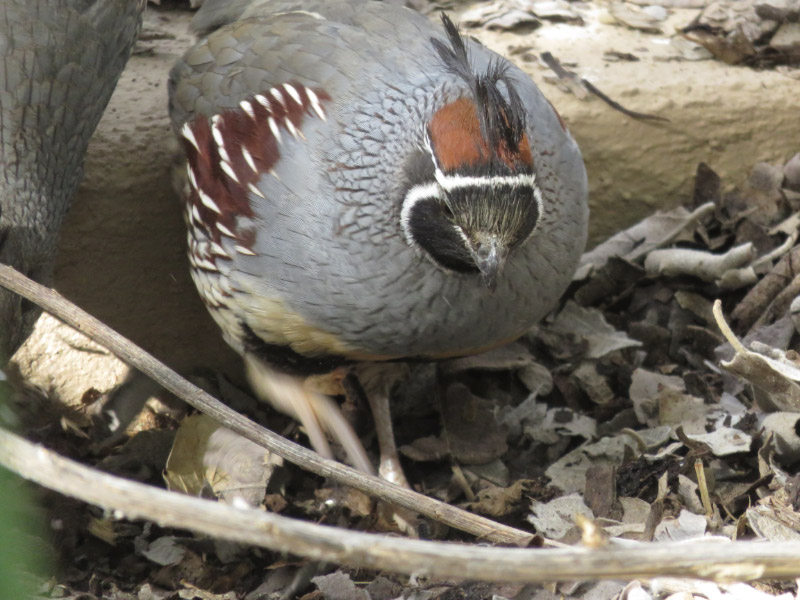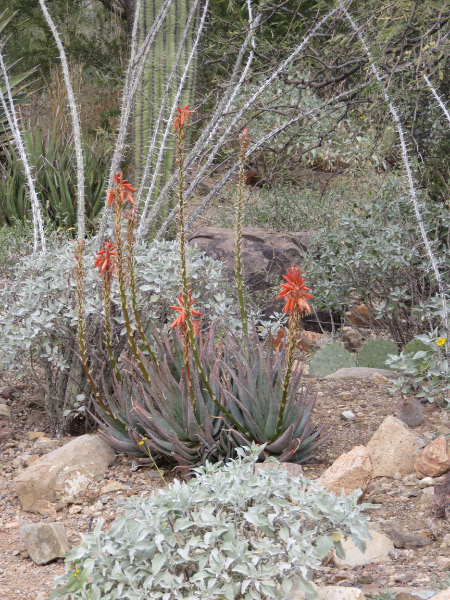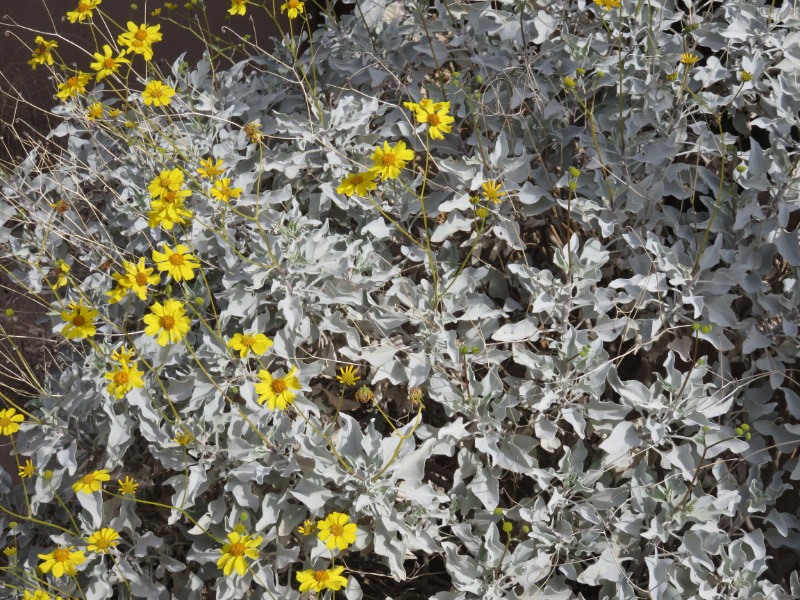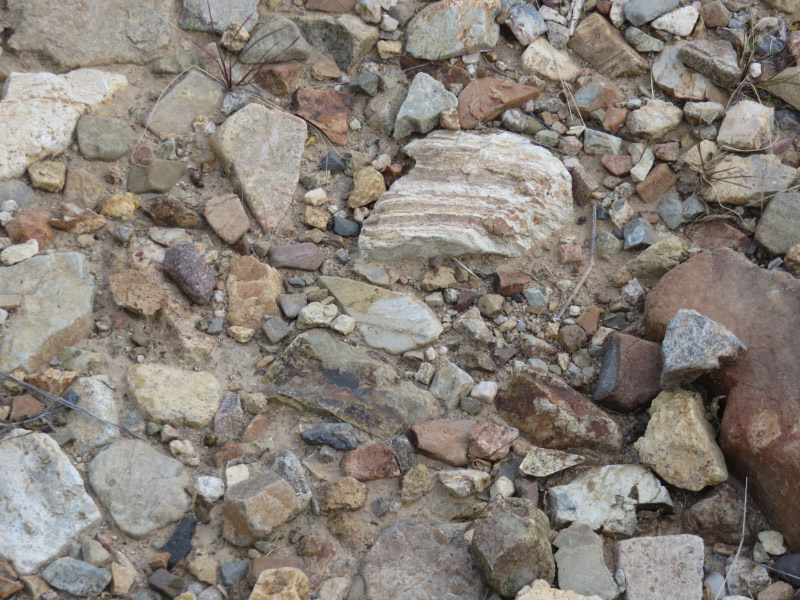Nature Photography with Mt. Pleasant Summer Camp
/The day after I volunteered at Belmont – I was at the other Howard County Conservancy location - Mt. Pleasant – for the same activity. The situation was easier because I had more assistants and the day was not quite as hot. It was harder because there were 15+ more campers (3 groups instead of 2). I started out with a short loop hike before the first group – just to check out what might be interesting topics. I focused on a stand of milkweed after I noticed a smallish Monarch caterpillar. It was the only one I saw on any of the plants but one is better than none!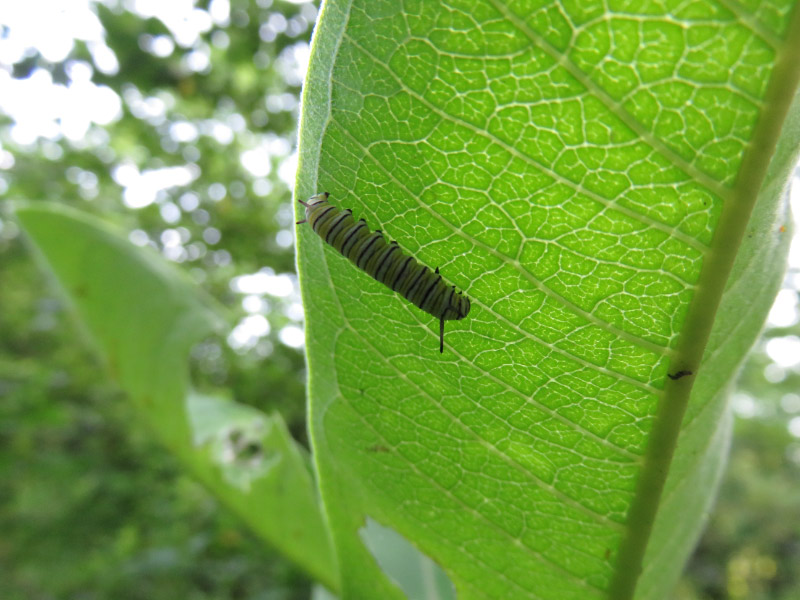
There were very active red milkweed beetles – mating and foraging.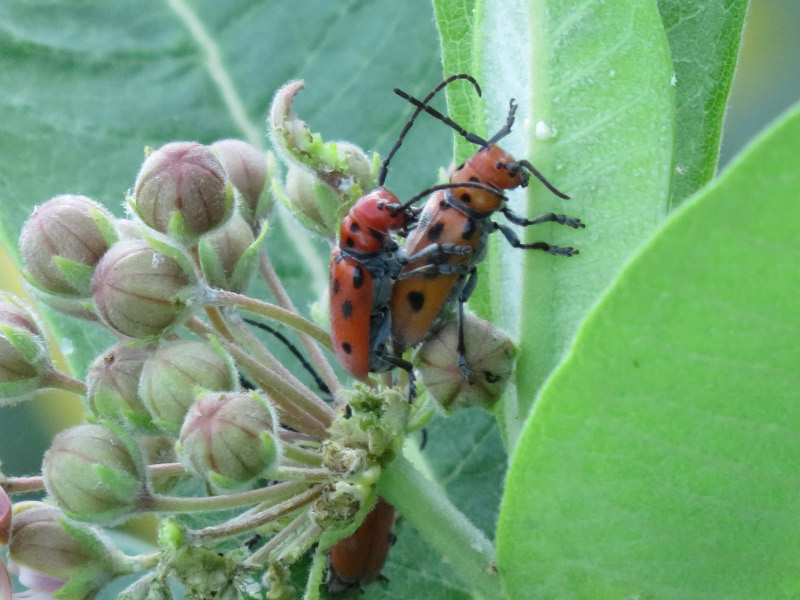
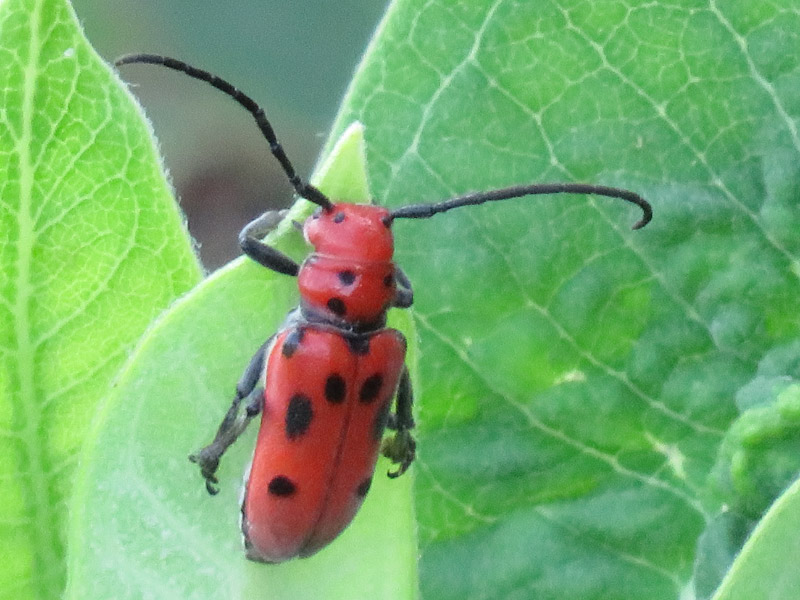
 There were aphids too.
There were aphids too.
I took fewer pictures with the campers since the groups all had 15 children. The two youngest groups needed a lot of attention. With the oldest group – ages 9-12 – more of the campers had some experience with cameras and were more independent taking pictures so I took some pictures of my own. My favorites were of ripening blackberries,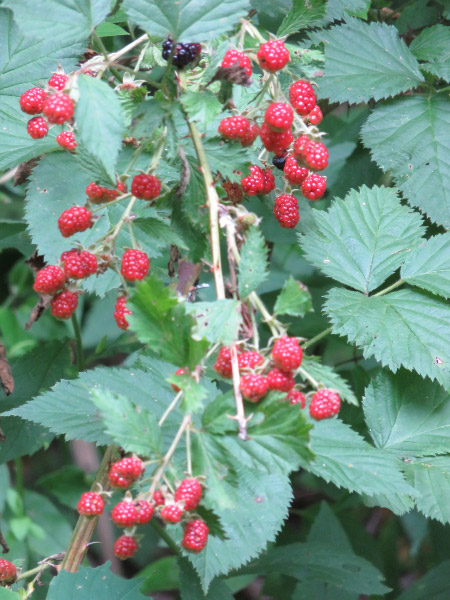
Horse nettle (with thorns visible…and obviously a plant that is buzz pollinated),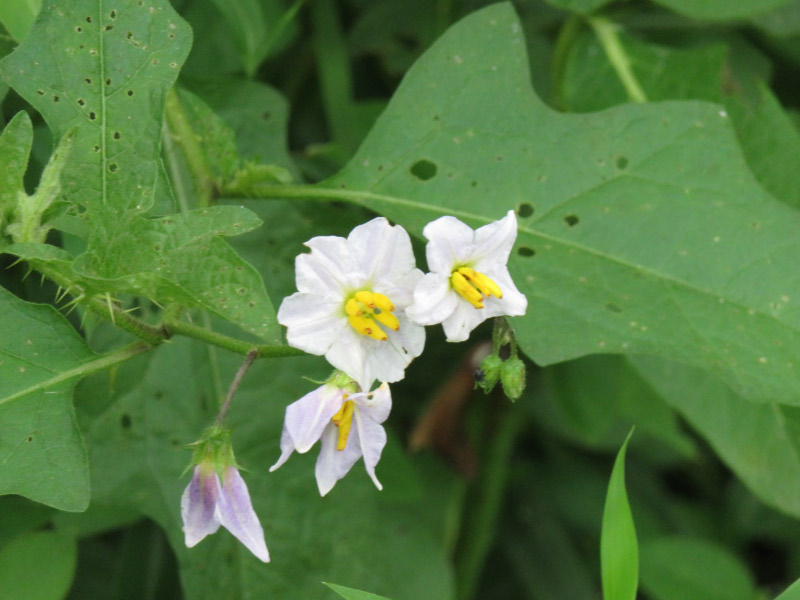
Milkweed bugs on butterfly week (the orange of the bugs matches the flowers quite well!),
Spice bush swallowtails on cone flowers,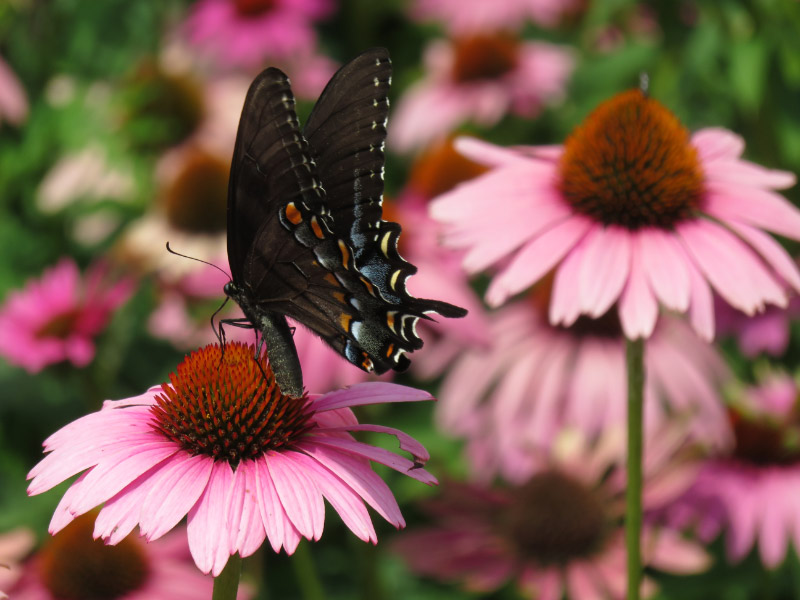
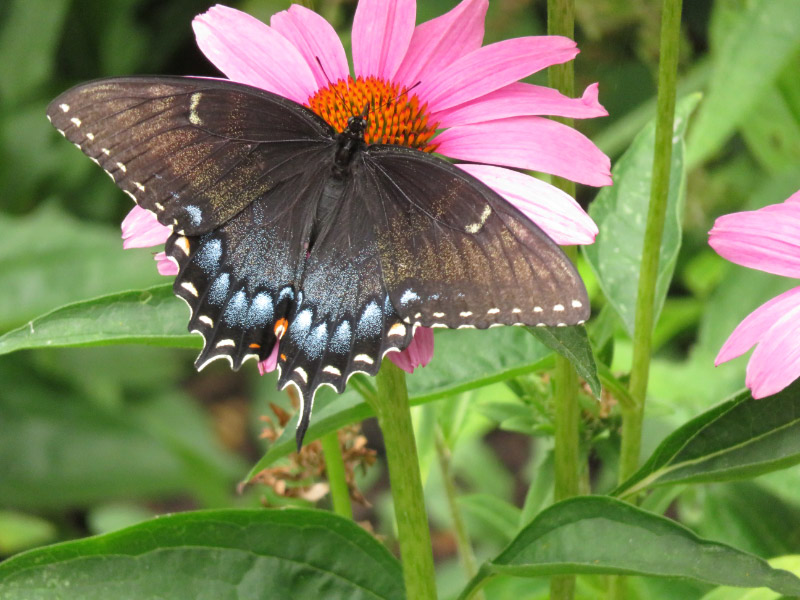
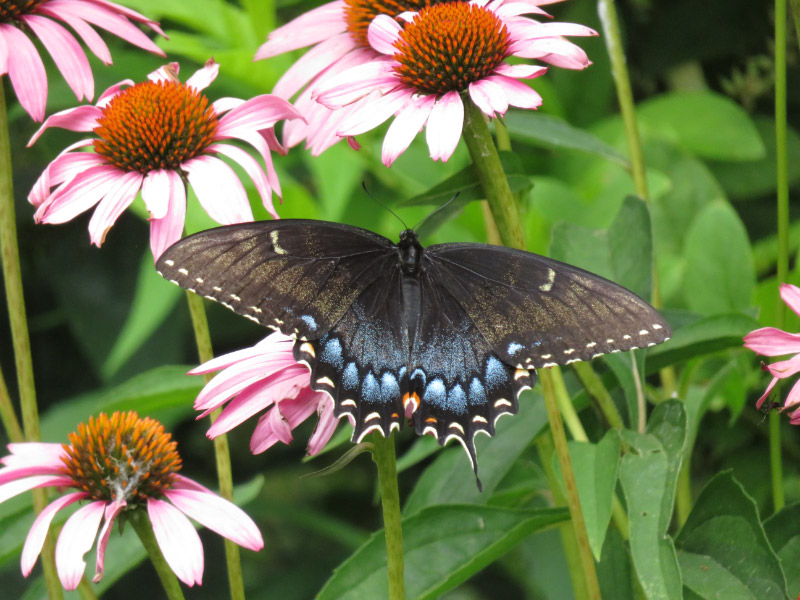
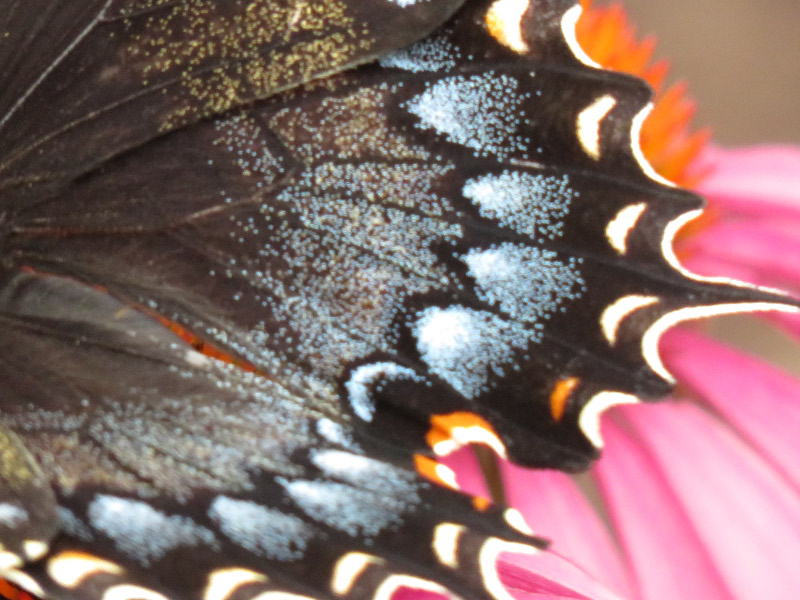
Tiger swallowtails on cone flowers (the ones with blue are females, without blue are males),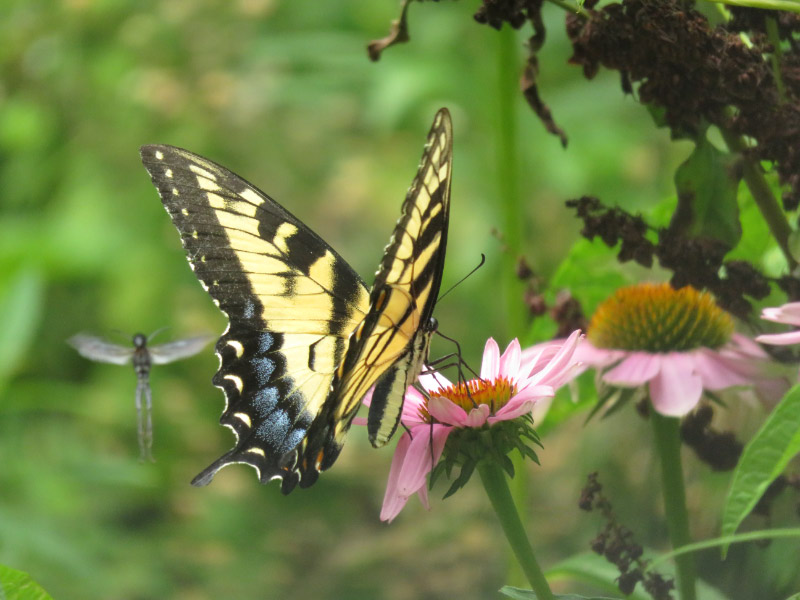
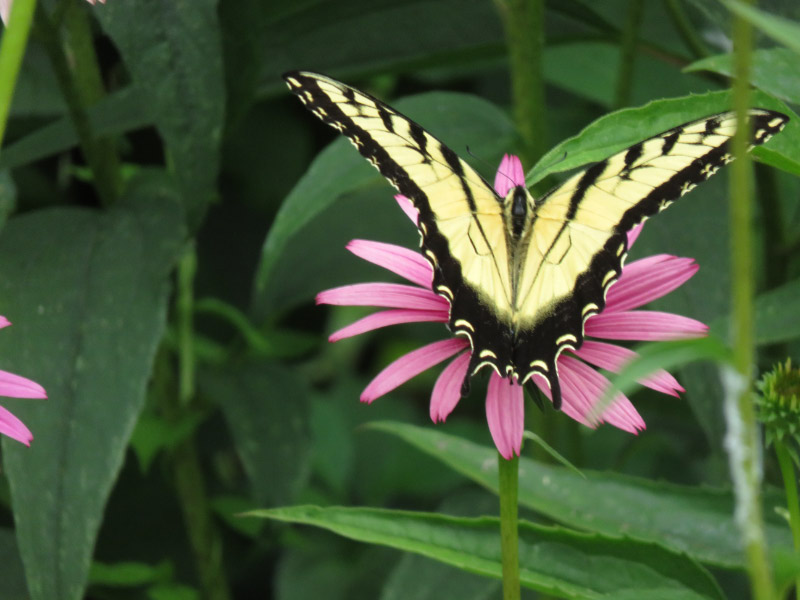
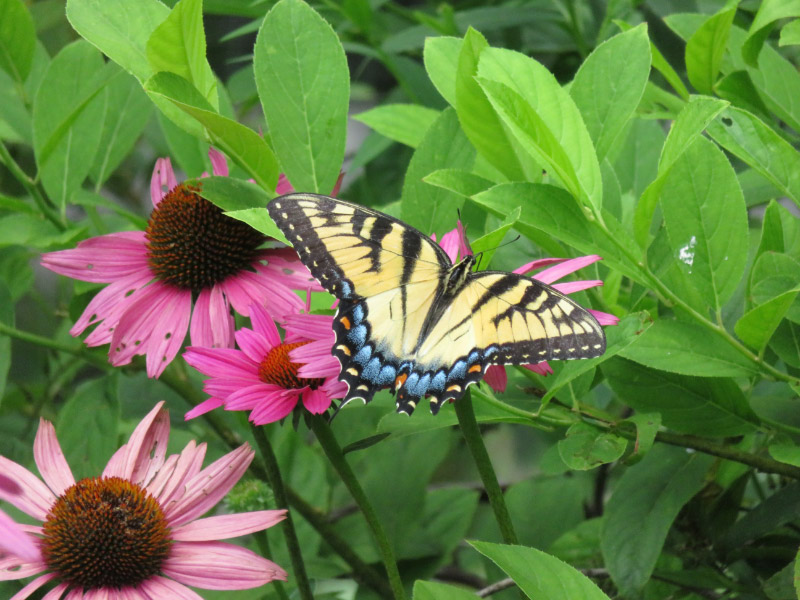
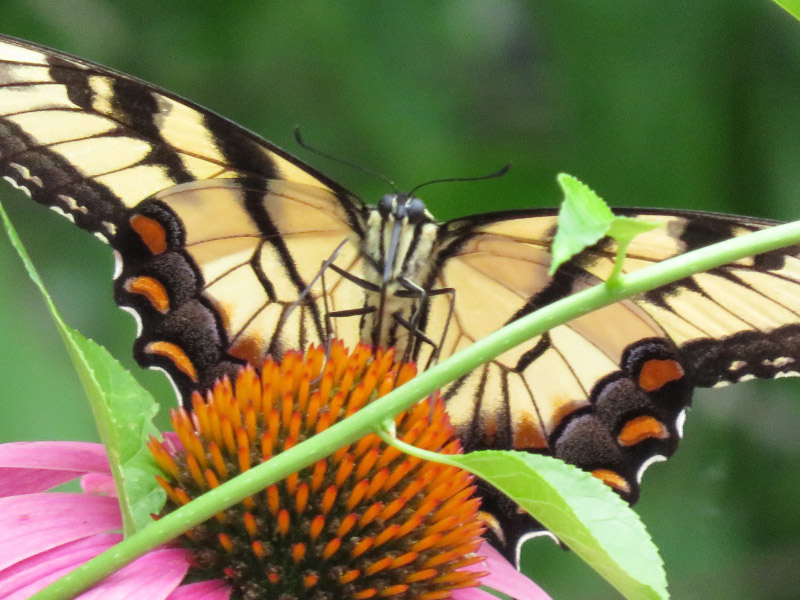
And my favorite image – a black eyed susan flower just opening amid a lot of greenery.


